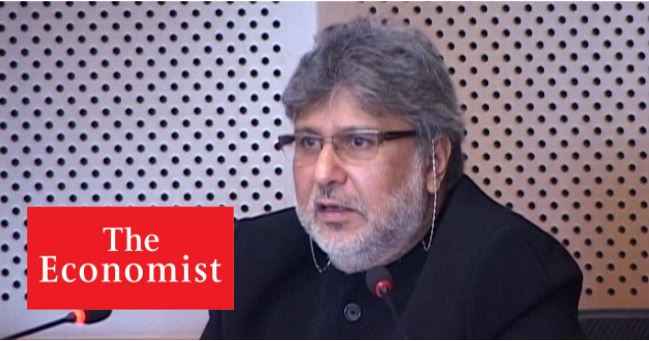Dear Editor,
In The Economist dated 4 August 2020, an article titled, ‘India’s ruling party replaces a mosque with a Hindu temple’, possibly filed from Delhi seems to be full of errors and distortion much beyond what can be termed as a journalistic license. It amazes me that the publication of your brand image and fame permitted such a piece to be published.
The BJP came to power in 2014, 22 years after the demolition of the structure called Babri Masjid. A closer look at the fortunes in the State of Uttar Pradesh, where Ayodhya is, will establish the reality that here also BJP did not benefit from the demolition. In the State Assembly, BJP from a high of 221 seats in 1991, a one-way slide was seen – 177 in 1993; 174 in 1996; 88 in 2002; 51 in 2007; and hitting a low of 47 in 2012. It is only after experiencing the benefits of the Modi Government for 3 years at the Centre that UP elected a BJP government at the state level with a thumping 312 out of the 403 seats.
A quick word on the Gujarat riots for which Prime Minister Modi has been blamed in the article and an oblique question mark on Hon’ble Supreme Court’s verdict giving Prime Minister Modi a clean chit seems the writer has even overlooked the fact that in the 10 years of Congress and other so-called secular parties rule not a single tribunal or court held Prime Minister Modi guilty on any account.
Prime Minister Modi’s efficiency and drive is a phenomenon accepted and appreciated the world over. This is what has catapulted him amongst world leadership. The people of India whole-heartedly supported his agenda in the 2014 election and out faith in him resulting in BJP winning a single-party majority, which no one managed in the previous 25 years. After experiencing the growth driven, corruption-free governance for 5 years, BJP won with even higher numbers in 2019. It was all about growth, development, last-mile delivery and better living for the masses where issues like the temple had no role-play.
On 5th of August, Prime Minister Modi went to Ayodhya for the Bhoomi Pujan (groundbreaking) ceremony in his capacity of a ‘jajman’ (devotee) but he was also representing the feelings and sentiments of the country. I take this occasion to remind the writer of the ancient Western to practise placing a silver coin, on similar lines with placing a silver brick during such ceremony.
As regarding the history of Ayodhya, kindly note that the Hindus believe that it is the birthplace of Lord Ram. There is archaeological evidences of the existence of a temple here that was demolished and a mosque built in 1528-29 by Gen Mir Baqi on the instructions of the Mughal Emperor Babar. This was named Babri Masjid. Does this fact not raise questions on the article’s title itself?
The Hon’ble Supreme Court of India settled a title suit related to ownership of the land in Ayodhya, the order did not have any mention of a Temple. Only after this judgment, the Trust, which got the possession, took steps towards re-building a Ram Temple, and the ‘bhoomi pujan’ was the first step as per Hindu practice. Is it not a tribute to the patience of the millions of Hindus, who waited for decades for the judiciary to decide on a matter that impacted their faith?
It is very pertinent to point out that in the run-up to this event many so-called ‘secularists’ including from the Congress party set-up prayers in their homes and tweeted hailing Lord Ram. This was all in line with the prevailing overwhelming mood. It is pertinent to point out that the independence of Indian Courts is established the world over.
The piece on Jammu & Kashmir in your article seems to be a masterpiece in distortion. For the records, Article 35A was surreptitiously included in the Constitution of India by an Executive order of the Government and Article 370 was brought in as a ‘temporary and transient’ provision, which conveniently remained for 66 years. In 1964 a Member of Parliament moved a resolution to drop article 370, despite a division in their ranks Congress party rejected the same.
Till these articles were in operation, imagine the plight of a young woman marrying outside the state of Jammu and Kashmir, who had to return to her home state for any reason including pronouncement of the word ‘talaq’ thrice, would find herself bereft of any asset or property completely at the mercy of others. Again for records, Kashmir, Jammu and Ladakh are 16%, 26% and 58% of the total erstwhile state of Jammu and Kashmir respectively.
No citizenship law has been changed, except an amendment has been made to simply fast track granting of citizenships to those minorities who have arrived in India before 31 December 2014, driven out from our neighbouring countries.
I must end with appreciating the writer’s assumption that BJP is in majority in the upper house (Rajya Sabha) as well. I am sure we will be very soon.
Greetings and regards
(Note: Shishir Bajoria is a BJP leader from West Bengal and is a Core Committee Member of the Dept. Of Foreign Affairs, BJP.)

